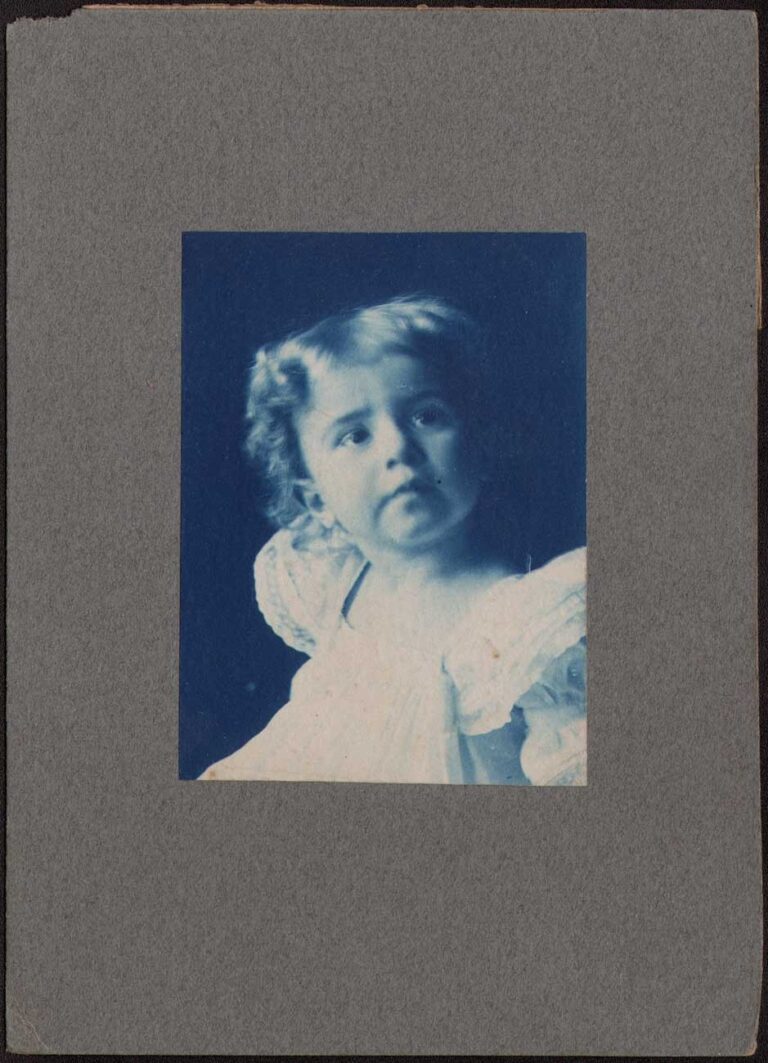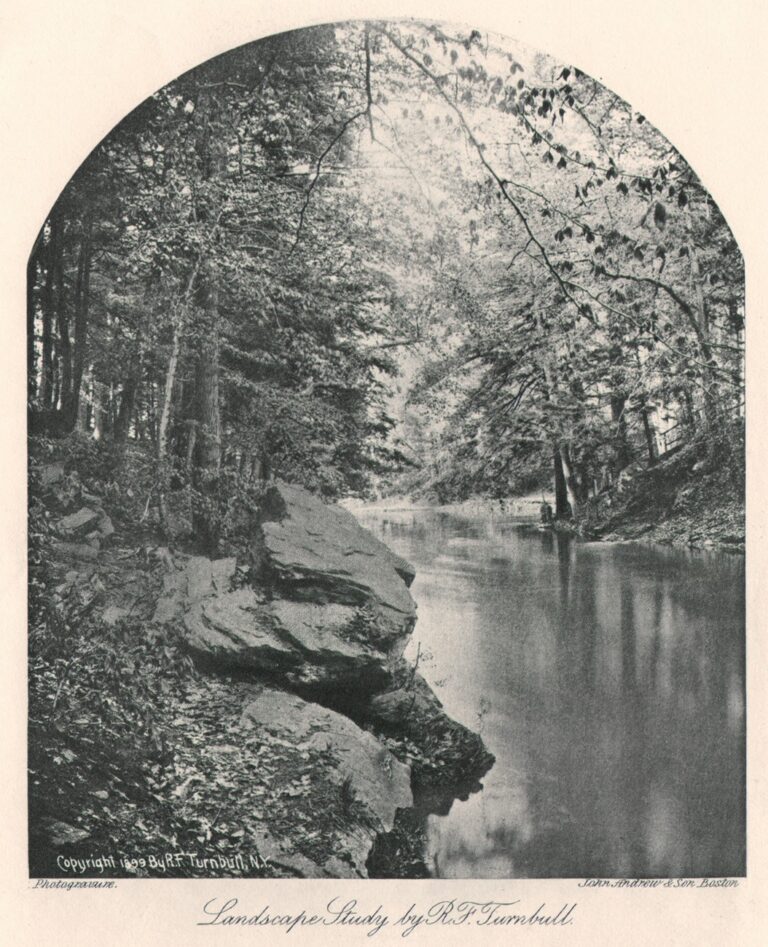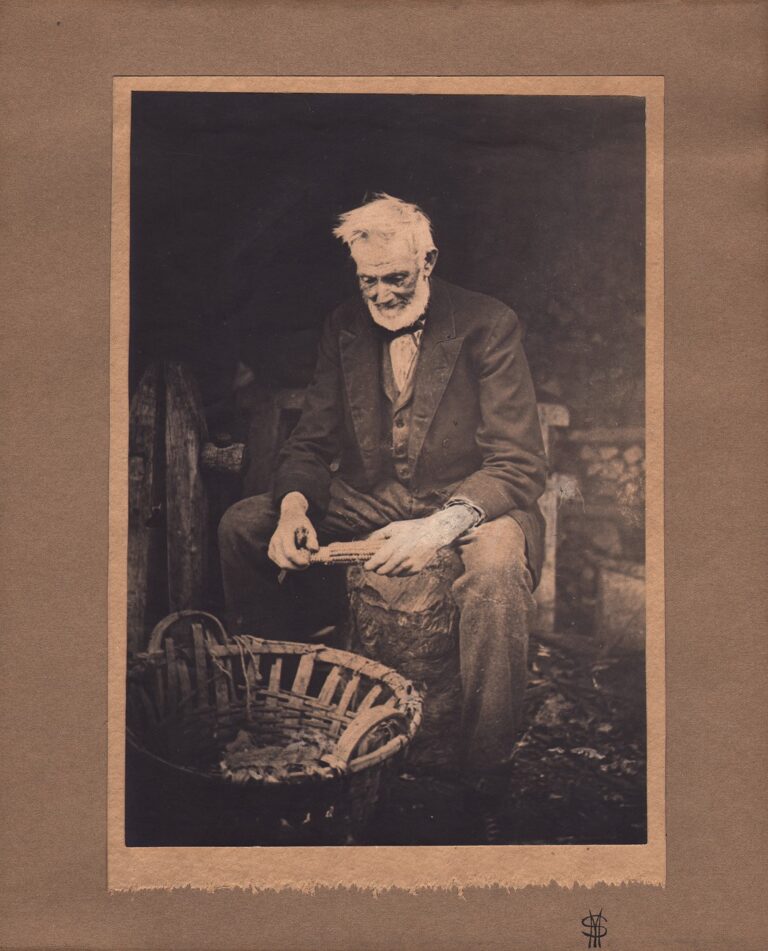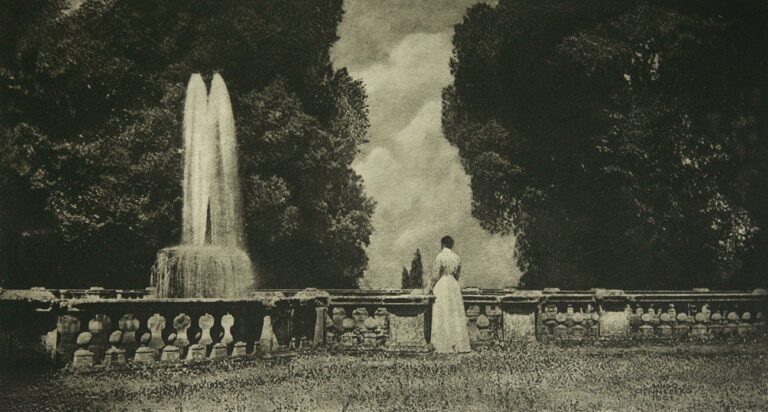
La Perle Doucement S’ Éteint et la Danse S’ Arrête | The Pearl Slowly Fades Away and the Dance Stops
The Pearl Slowly Fades Away and the Dance Stops. The title refers to a literal interpretation of this scene: when the Sun finally sets, (the Pearl) the dancing between the two young women will cease.
Fritz Loescher, in his essay On the Pictures of P. Dubreuil published in the July, 1901 Photographische Mitteilungen writes:
“La Perle doucement s’éteint et la danse s’arrête”: (a picture) “of the purest harmony and the most perfect expression of emotion”:
The second image sounds like a dying song in the setting night. On the white, furrowed sea sand, over which the waters flowed, they danced after their work. Now the light gradually dies and with it the dance fades away, for dance is a child of the light. They have whirled around for the last time, their movements become more subdued and tired, and now they stand still. They hold hands and lean back, as if in delicious relaxation. They look long and deeply into each other’s eyes once more while the sun sets.
Such pictures are real rarities; one could say that they were achieved not because of, but in spite of, photography. One should not try to imitate them if one is not internally called to such tasks, because even an expert like Dubreuil can perhaps only achieve such success once. The technical aspects of the last picture discussed are also flawless. In particular, the way the piece of ship’s hull with sail, yard and rope protrudes into the picture on the left in an almost ghostly silhouette is a first-class move. (p. 221)
A full-color reproduction from this plate is reproduced in the volume Le Pictorialisme En France by Michel Poivert, 1992, with the following commentary:
Perhaps the most original figure of French pictorialism, Pierre Dubreuil benefited from a rediscovery during the exhibition at the Centre Georges Pompidou (Paris, 1987-1988) which highlighted the modernity of his production. Appreciated by his Anglo-Saxon and Belgian contemporaries more than by his compatriots, he likes to assert his taste for the “bizarre”. Here he borrows his composition from Alfred Stieglitz who had given a similar image in Die Kunst in der photographie (1899, no. 5) under the title “Strassenklatsch“. p. 84
✻ ✻ ✻ ✻ ✻
On the 150th anniversary of the birth of Lille (France) photographer Pierre Dubreuil (1872-1944 ) in 2022, The Palace of Fine Arts in Lille held the exhibition “Pierre Dubreuil. Photographic Paintings”. (1.) Critic Gersende Petoux makes some observations on this important early French pictorialist who would go on to become a ground-breaking modernist in later decades:
But Pierre Dubreuil is not a photographer: he is a painter, a draftsman, a poet, a revolutionary, a humanist, a pun lover, a free thinker… Not content with being a pioneer, an innovator in technical and artistic processes in photography, he literally rethought its scope and meaning.
Coming from the pictorialist movement, he makes photography and painting rhyme, using heliogravure, a process combining engraving and photography, gum bichromate prints, requiring the use of a brush and bringing the photographer closer to the painter, reworking his negatives into different prints, which he retouches in as many different expectations, to the point of abstraction. Continues… (2.) (translated)
✻ ✻ ✻ ✻ ✻
- “Pierre Dubreuil. Tableaux photographiques”. Lille, Palais des Beaux-Arts du 20 octobre 2022 au 27 février 2023. The exhibit featured over 90 modern prints from slides made from negatives by Dubreuil in the 1930s as well as original works like this heliogravure.
- Excerpt: Gersende Petoux, le 6 décembre 2022: Quand la photographie devient peinture – Pierre Dubreuil: Source: Aralya: Tout est art



